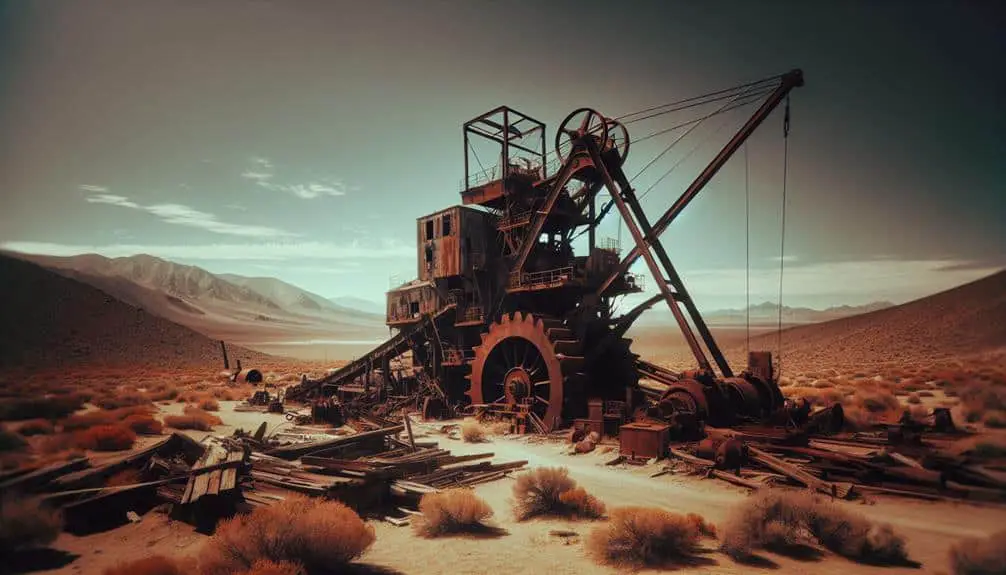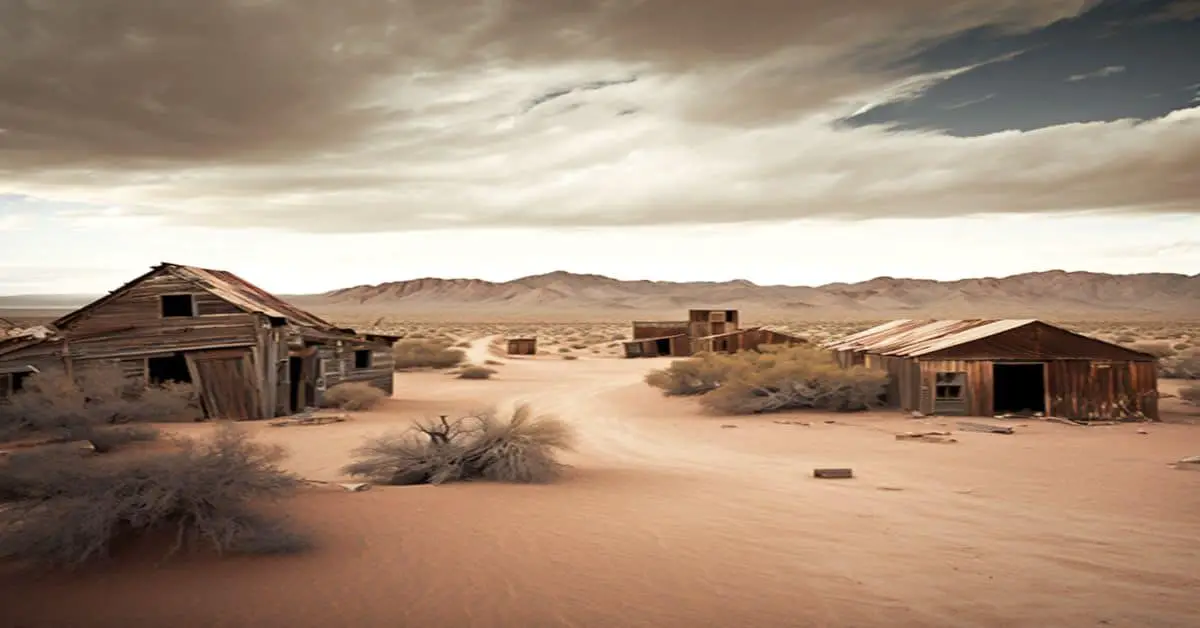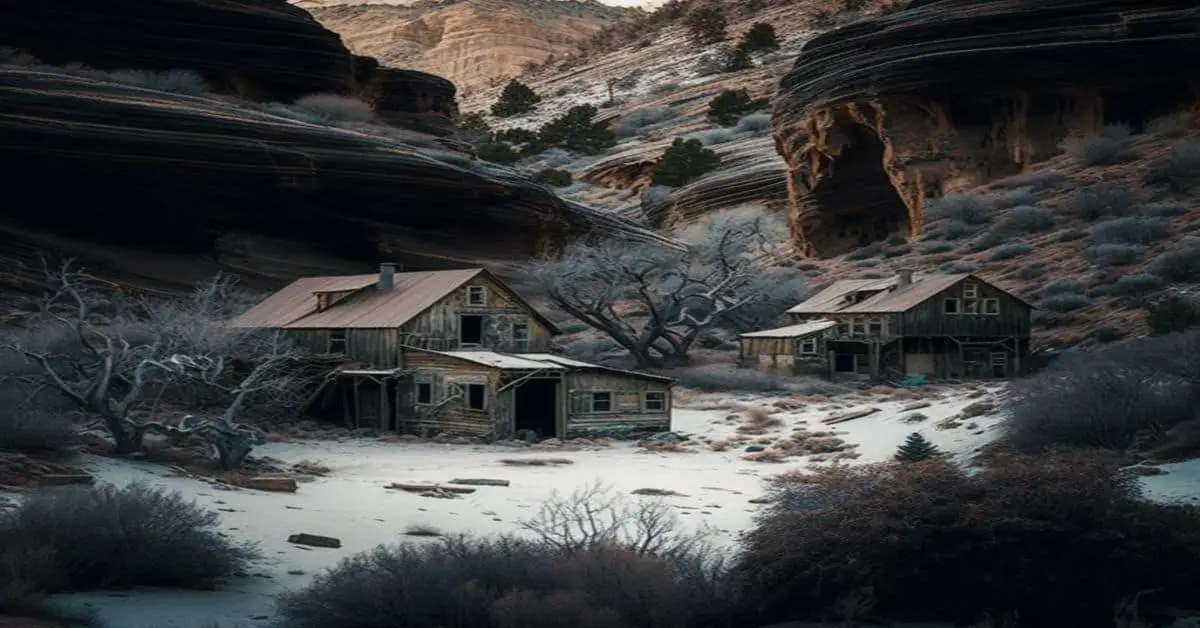California's Gold Rush communities disappeared due to economic shifts like diversification, environmental damage from mining, competition among settlers, declining gold production, and preservation efforts. The towns boomed with urban development, businesses, and agricultural growth. Mining caused deforestation, habitat disruption, and water contamination. Settler influx led to disputes and cultural clashes. Depletion of gold deposits caused miners to leave, impacting prosperity. Today, preservation efforts and community engagement maintain the legacy. Understanding these factors provides insight into the complex reasons behind the disappearance of these historical towns.
Key Points
- Depletion of easily accessible gold deposits led to declining production.
- Miners faced diminishing returns, prompting an exodus from the communities.
- Dwindling population mirrored decreasing productivity and economic decline.
- Environmental damage from mining activities impacted habitats and biodiversity.
- Shifts in economic focus and industries contributed to the disappearance of Gold Rush towns.
Economic Shifts Impacting Gold Rush Towns
As economic forces evolved during the Gold Rush era, the impact on towns was profound, reshaping their social fabric and physical landscapes. Urban development surged as the influx of miners and settlers led to the rapid growth of towns throughout California. The need for infrastructure such as roads, bridges, schools, and hospitals became apparent, transforming once rural areas into bustling urban centers.
Economic pivotal also played a vital role in shaping these communities. As the Gold Rush progressed, towns began to diversify their economies beyond mining. Businesses catering to the needs of miners, such as saloons, hotels, and general stores, thrived. Agriculture and trade industries also saw significant growth as towns developed into trade hubs for the region.
The economic shifts brought about by the Gold Rush not only fueled urban development but also laid the foundation for the long-term sustainability of these communities. The diversification of economies helped towns weather the boom-and-bust cycles of mining, ensuring their resilience in the face of economic uncertainties.
Environmental Changes and Gold Mining
Environmental alterations resulting from extensive gold mining activities in California's Gold Rush communities have had profound and lasting effects on the region's ecosystem. The ecological impacts of these mining activities were significant, with widespread deforestation to clear land for mining operations and the extensive use of hydraulic mining techniques leading to erosion, sedimentation of rivers, and contamination of water sources with mercury and other toxic chemicals. The disruption of natural habitats and waterways caused by gold mining not only harmed local wildlife but also had long-term consequences for biodiversity in the region.
Mining techniques such as hydraulic mining, which involved using high-pressure water jets to dislodge and transport sediment, were particularly destructive to the environment. This method of mining led to the loss of fertile soil, increased flooding in low-lying areas, and the destruction of aquatic ecosystems. The ecological degradation caused by gold mining in the Gold Rush communities of California serves as a stark reminder of the lasting impact that intensive resource extraction can have on the environment.
Influx of New Settlers and Competition
The arrival of new settlers during the California Gold Rush brought about intense competition among individuals seeking to strike it rich in the burgeoning gold mining communities. Settler rivalries became prevalent as the population surged with people from diverse backgrounds flocking to California in hopes of finding gold. This influx led to demographic changes, with the once small and tight-knit communities expanding rapidly, creating a more crowded and competitive environment.
As more settlers arrived, the competition for gold increased greatly. Miners had to contend not only with the geographical challenges of extracting gold but also with the growing number of prospectors vying for the same precious resource. This heightened competition strained relationships among settlers, leading to disputes over mining claims, water rights, and territory. The influx of new settlers also brought cultural clashes and tensions, further exacerbating the already intense rivalries within the gold mining communities.
Decline in Gold Production and Resources
With the depletion of easily accessible gold deposits, the once abundant resources in California's Gold Rush communities began to dwindle, signaling a significant decline in gold production. As the mines were depleted, miners faced diminishing returns on their efforts, leading to a gradual exodus from these areas.
The dwindling population in these communities mirrored the decreasing productivity of the mines. Miners who'd flocked to California in search of wealth found themselves struggling to sustain their livelihoods as the gold reserves dwindled.
This decline in gold production not only impacted the economic prosperity of these communities but also contributed to the disintegration of the social fabric that had been woven during the initial Gold Rush excitement. The landscape that once bustled with activity and opportunity now bore witness to abandoned mines and deserted towns, serving as a stark reminder of the transience of boom-and-bust cycles in resource-dependent regions.
Legacy and Preservation Efforts Today
Preservation efforts today focus on safeguarding the historical heritage of California's Gold Rush communities through targeted conservation initiatives. These initiatives are vital in maintaining the historical significance of these once-booming towns.
Here are three key aspects highlighting the importance of preservation efforts:
- Community Engagement: Involving local communities in preservation initiatives fosters a sense of ownership and pride in their history. It allows for the transmission of knowledge and stories from generation to generation, guaranteeing that the legacy of the Gold Rush era remains alive.
- Historical Accuracy: By conducting thorough research and employing archaeologists and historians, preservation efforts aim to make sure that the restoration and conservation work accurately reflect the historical context of the Gold Rush period. This attention to detail is essential in preserving the authenticity of these communities.
- Tourism and Education: Preserved Gold Rush sites attract tourists interested in experiencing a piece of American history. Additionally, educational programs and guided tours help visitors understand the challenges and triumphs of the Gold Rush pioneers, contributing to a deeper appreciation of the past.
Frequently Asked Questions
What Impact Did the Gold Rush Have on the Indigenous Populations in California?
The gold rush had devastating effects on indigenous populations in California. Indigenous displacement and exploitation were rampant as settlers encroached on their lands. Cultural assimilation efforts were met with resistance, leading to the erosion of traditional ways of life.
How Did the Gold Rush Affect the Overall Economy of California Beyond Just the Mining Industry?
You see, the Gold Rush was like a wildfire, blazing through California's economy. It didn't just boost mining, but sparked agriculture growth with new businesses and opportunities sprouting like wildflowers across the state.
Were There Any Long-Term Health Consequences for Miners Due to Exposure to Toxic Chemicals During Gold Mining?
Exposure to toxic chemicals during gold mining had long-term health consequences for miners. The environmental impact was severe as well. These factors led to health issues that persisted beyond the gold rush era.
What Role Did Women Play in the Gold Rush Communities and How Were They Affected by the Boom and Bust Cycles?
In the gold rush communities, women defied traditional gender roles, influencing social dynamics. They navigated boom and bust cycles, adapting to economic fluctuations. Their resilience and resourcefulness shaped the fabric of these evolving societies, leaving lasting legacies.
How Did the Gold Rush Influence the Development of Infrastructure and Transportation in California?
Transportation advancements spurred economic growth during the Gold Rush in California. Infrastructure expansion facilitated urban development. The Gold Rush led to the creation of roads, railways, and ports, connecting remote areas and transforming the state's landscape.



